#they did up my remains during an archeological dig thousands of years in the future and this picture is in my skull
Explore tagged Tumblr posts
Note
umemiya’s favorite position is the mating press because he gets to be so close to you and he can run his mouth and compliment you and tell you how pretty you are and how good you feel and you literally cannot do anything but lay there and listen to him. he’s never been controlling or particularly demanding, but when he has something he needs you to hear or understand, TRUST that he’ll find a way to make you

This guy/??? I don't know him sorry. I've actually got a uhhh....bible convention to gotobye-🏃♀️💨
#still i go wild over this pic its actually seared into my brain like a tuna steak. cant ever forget it even if i die.#they did up my remains during an archeological dig thousands of years in the future and this picture is in my skull#that was weird sorry#aria are you bullying me? Im feeling attacked#no....it's ume's fault...aria is an angel#i mean in that position it's great he's cooing over you...he can kiss you...you can suck on his tongue- WHO SAID THAT#aria🎨#couldnt find a better resolution of that pic so sad#mari says#what do i even do to thank you for all of my gifts
5 notes
·
View notes
Text
Anonymous asked: I love your long posts which make for great reading and I wish you could do more because you’ve got such a range of astonishing interests. I’m hoping because you’ve served in the military you would have studied military thinkers. Do you think the Art of War by Sun Tzu is way overrated by everyone? I studied him a bit for my masters but I still couldn’t get my head around him. Interested to know your thoughts. Thanks!
“To lift an autumn hair is no sign of great strength; to see the sun and moon is no sign of sharp sight; to hear the noise of thunder is no sign of a quick ear." - Sun Tzu's Art of War, Chapter IV - Tactical Disposition, Clause 10.
Sounds cool, doesn’t it?
But what the hell does this quote really mean? Do you know what it means? Can anyone else tell me?
Look, I enjoy a good Sun Tzu quote as the next person. Only recently I was exchanging thoughts with a fellow blogger whose studying Thucydides, Clausewitz, and Kissinger for an advanced course at the US Naval War College. Even he prefers Sun Tzu over Clausewitz. I can see why too. If you can make sense of chapter one of Clausewitz’s tome On War you deserve a Nobel Prize.
Unlike my very learned fellow blogger, there are lot of folk who don’t know Sun Tzu at all. They can quote him, but almost certainly out of context. As someone who partly grew up in the Far East and even learned Chinese and Japanese (a pitiful but functional degree of fluency) I’m embarrassed (not hard since I’m English) when I hear other Western compatriots romanticise and elevate Eastern icons to mythic status that the Chinese themselves have never done.
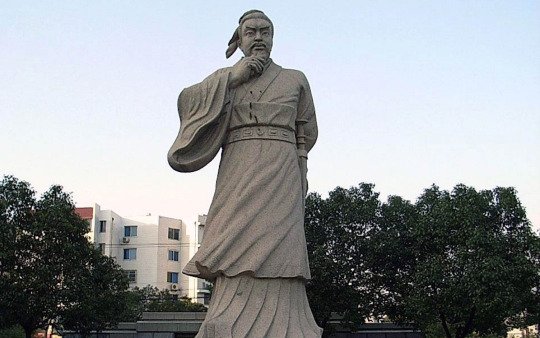
I am even more bemused than embarrassed after having hung up my military uniform for ‘civvy’ corporate clothing at how badly abused Sun Tzu’s book is in the corporate world. In my workplace I grit my teeth at corporate high flyers who mistake a balance sheet for a real battlefield by quoting Sun Tzu out of their arse, and then as self-styled ‘corporate warriors’ work themselves up in a lather of testosterone induced self-importance to crush their corporate enemies into the dust.
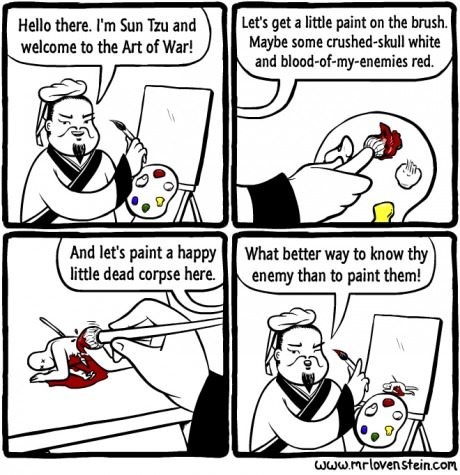
This is why the The Art of War by Sun Tzu has invited a jaundiced eye roll. And rightly so. I can see why many view Sun Tzu as over-rated because many easily impressed people go all woo woo over anything ancient and Eastern.
It’s become a familiar trope to say the art of ‘strategy’ as a science began 2,500 years ago with the writing of The Art of War. I would dispute this. Not that the writing of Art of War was the earliest written but whether I would call it a manual of strategy per se - more on this below in my answer. However you rate or overrate the Art of War it’s important to have perspective and remember this book is written in 512 BC. Other than the bible and some religious books, there are not many books that can survived thousands of years and still remains a steady bestseller and enjoys a wide influence in military academies and army staff colleges today and even as far into board rooms.
The question behind your question is just as interesting to me: why did Sun Tzu and his Art of War gain such traction in the West?
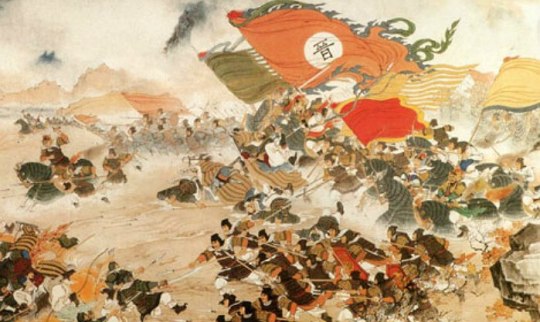
Sun Tzu (544-496 BC) wrote the original text of The Art of War shortly before 510 BC. During most of the past two thousand years, the common people in China were forbidden to read Sun Tzu's text. However, the text was preserved by China's nobility for over 2,500 years. The Chinese nobility preserved the text of The Art of War, known in Chinese as Bing-fa, even despite the famous book-burning by the first Emperor of Chi around 200 BC. The text was treasured and passed down by the Empire’s various rulers. Unfortunately, it was preserved in a variety of forms. A "complete" Chinese language version of the text wasn't available until the 1970s. Before that, there were a number of conflicting, fragmentary versions in different parts of China, passed down through 125 generations of duplication.
Indeed at the beginning of the twentieth century, there were two main textual traditions in circulation, known as the (Complete Specialist Focus) and (Military Bible) versions. There were also perhaps a dozen minor versions and both derived and unrelated works also entitled Bing-fa. Of course, every group considered (and still considers) its version the only accurate one.
When I last visited China before the Covid pandemic for work reason, I had time off to go to a couple of museums that housed the fruits of a number of archeological digs uncovering the tombs of the ancient rulers of China in which sections of Sun Tzu’s works were found. These finds have verified the historical existence of the text and the historical accuracy of various sections. I understand new finds are still being made.

The first complete, consistent Chinese version was created in Taipei in the 1970s. It was titled The Complete Version of Sun Tzu’s Art of War." It was created by the National Defence Research Investigation Office, which was a branch of Taiwan's defence department. This version compared the main textual traditions to each other and to archeological finds and compiled the most complete version possible.
This work was completed in Taiwan rather than mainland China for a number of reasons. Mainland China was still in the throws of the Maoist Cultural Revolution, which actively suppressed the study of traditional works such as Sun Tzu. The mainland had also moved to a reformed character set, while Taiwan still used the traditional character set in which the text was written. Only today is the study of Sun Tzu in mainland China growing, interestingly enough, through the translation of Sun Tzu into contemporary Mandarin. Based on the archeological sources we have today, we are reasonably certain of the historical accuracy of this compiled version that is the basis of what most people use today.
Surprisingly, the Art of War only came to light in the West around the 18th Century.
Historians believe it was first formally introduced in Europe in 1772 by the French Jesuit Joseph-Marie Amiot. It was translated at the time by the title “The thirteen articles of Sun-Tse”. Joseph-Marie Amiot (1718-1793) was not just a Jesuit priest but also an astronomer and French historian, as well as fervent missionary in China. He was one of the last survivors of the Jesuit Mission in China (he died in Beijing).

Many of the historical problems with understanding Sun Tzu's work can be trace back to its first Western translation in French. A Jesuit missionary, Father Amiot, first brought The Art of War to the West, translating it into French in 1782. Unfortunately, this translation started the tradition of mistranslating Sun Tzu's work, starting with the title, The Art of War (Art de la guerre).
This title, copied the title of a popular work by Machiavelli (a criminally underrated writer on military strategy), but it didn't reflect Sun Tzu's Bing-fa, which would be better translated as "competitive methods."
We cannot say what effect being translated by a Jesuit priest had upon the text. It was unavoidable that the work's translation reflected the military prejudices of the time era when war was both popular and Christian. It was also unavoidable that most future translations would reflect some of the first translation's prejudices. However, war was on the verge of becoming much less Christian in the West since this time was the era of the French Revolution (1789).

The work might well of slipped into obscurity after its initial publication, but it was discovered by a minor French military officer. After studying it, this officer rose to the head of the revolutionary French army in a surprising series of victories. The legend is that Napoleon used the work as the key to his victories in conquering all of Europe. It is said that he carried the little work with him everywhere but kept its contents secret (which would be very much in keeping with Sun Tzu's theories).
However, Napoleon must have started believing his own reviews instead of sticking with his study of Sun Tzu. His defeat at Waterloo was clearly a case of fighting on a battleground that the enemy, Wellington, knew best. Wellington’s trick at Waterloo was hiding his forces by having them lie down in the slight hollows of this hilly land. This is exactly the type of tactic Sun Tzu warns against in his discussion of terrain tactics.
After Napolean, Sun Tzu's theories made their way into western military philosophy. Many of his ideas are reflected in the ideas of work of Carl von Clausewitz. who defined military strategy as "the employment of battles to gain the end of war."
The first English translation of The Art of War is less than a hundred years old. Captain E. F. Calthrop published the first English translation in 1905. Lionel Giles, an assistant curator at the British Museum and a well-known sinologist and translator, attacked this early translation, and he published his own version in 1910. It soon began to be read alongside Clausewitz’s 8 volumes of turgid German military prose.

It wasn’t long before military thinkers were ditching Clausewitz for Sun Tzu because no one could get past Chapter One of Clausewitz’s On War. The “Clausewitz is dead, long live Sun Tzu” school was first championed by the influential British military theorist B.H. Liddell Hart in the 1920s. Basil Henry Liddell Hart (1895-1970) was a captain in the British Army. He was a very influential military theorist and historian, and author of several books such as The Future of War (1925) and Strategy (1954). Having witnessed first-hand the mechanised onslaught of the Great War, Liddell Hart sought a philosophy of warfare based in the prudent use of technology, psychology and deception - and the avoidance of the 'total war' catastrophes of preceding decades.
The main idea of Liddell Hart is to bring the set of principles of warfare in a so-called ‘indirect approach’ to the enemy. His advocacy in his scholarly work of an ‘indirect strategy’ over direct, frontal operations, was a reaction to the high casualties of the Western Front in the First World War. But his ideas were not simply about physically outmanoeuvring an opponent. Instead he pushed for a psychological scheme: to strike from unexpected directions, to generate strategic dissonance, and to induce paralysis. Hart’s well-known thoughts are “Only short-sighted soldiers underestimate the importance of psychological factors in time of war”, “Originality is the most important from all military virtues”, and “The principles of war could shortly be condensed in a single word: concentration”.
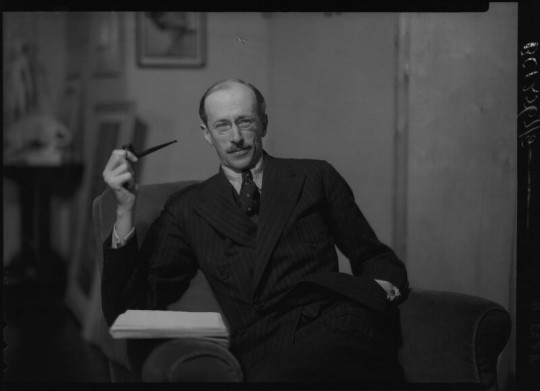
Liddell Hart believed that distilling historical insights of strategy and operations would offer the chance to avoid the costly disasters of modern war and ensure a more cost-effective route to success. He imagined technological solutions in the form of air power and mechanised land forces outflanking and shocking an enemy at the tactical level. This would be complemented by taking indirect strategic ‘ways’. Like his contemporary J.F.C. Fuller, Liddell Hart considered concentrations of air and armoured forces driving deep into enemy territory to destroy their ‘nervous system’. The psychological aspects of this were central, since acquiring an advantage demanded moves that were unexpected, with precise attacks at the most vulnerable points. As the most influential military writer of the modern age, revered and reviled by three generations of strategists, armchair and armipotent, his controversial theories of armed attack laid the foundation of the famed German Blitzkrieg.
Hart’s championing of Sun Tzu’s work as articulated through his own works got a new lease of life as the world gingerly settled into the ice bath of the Cold War. The rise of Communist China, against all the odds having defeated the well disciplined nationalist armies of Chian kai-Shek, was a wake up call for the West. There was a general befuddlement among western military analysts to explain the secret of Maoist success. There was an intellectual inquest in the 1950s and 1960s for some way to explain (and, it was hoped, learn to counter) Maoist military doctrine. Sun Tzu was seen as one of the historical and cultural sources of some particularly Chinese or Asian way of war, and his work made its way into Western discussions of counterinsurgency and asymmetric warfare.

Into the breach - and with fortuitous timing - appeared a new translation of The Art of War that was to become the defining translation right down to our day. Liddel Hart provided the foreword to Samuel Griffth’s 1963 translated copy of the Art of War. It was to quickly become a key text in US war colleges and this version is still to this day favoured by most of these institutions. We also studied Griffith’s translation at Sandhurst alongside Liddell Hart’s ideas.
There is no question that Griffith’s translation has become the standard go to translation to this day in military circles - that is until James Clavell’s more populist and looser translation came along in the 1980s. One can see why. Griffith’s translation provided a number of historical Chinese commentaries on the text. It should also be noted that Griffith’s strengths was his immense experience in the military and knowledge of military history as a brigadier general in the U.S. Marine Corps.
However, this was also his version's greatest flaw. Like many other critics I have the impression that Griffith did not really believe or understand all of Sun Tzu. Indeed he would often explain away Sun Tzu's direct statements without making it clear that this was his commentary and not what Sun Tzu wrote. The other main criticism and this one is stylistic and therefore just my opinion, Griffith was also not much of a writer. By our standards today, much of Griffith’s language can seem awkward and dated.
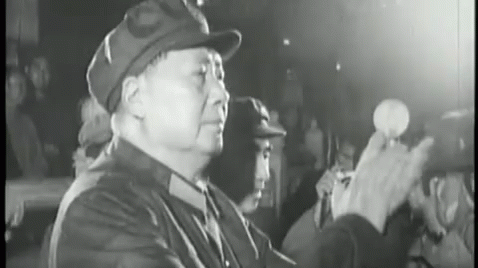
Looking back it feels ironic of the US military were wrapping their heads around Sun Tzu as way to get inside the Chinese communist mind (of Mao the military strategist especially). Unknown to them Mao had desperately tried everything to get hold of a copy of the Art of War from the Chinese Nationalists. Cambridge historian and doyenne of intelligence history, Christopher Andrew in his book The Secret World: A History of Intelligence, wrote that the theory that Sun Tzu’s The Art of War was critical to mastering contemporary warfare is propagated through the use of a tantalising anecdote: “During the civil war between Communists and the Kuomintang regime [Mao Zedong] sent aides into enemy territory to find a copy of it.” The ancient text, ostensibly, was of such vital importance that Mao was willing to risk men’s lives to obtain it, while Chiang Kai-shek vowed to protect it all costs. It’s a questionable anecdote at best as there are no historical evidence of it.

We can say that the notion that Sun Tzu’s slim treatise is considered both potent and slightly dangerous - providing the master key to unlocking victory in war through the ages - is a compelling myth that refuses to die. Mao most likely never ordered a clandestine operation to pilfer the text, nor did Chiang Kai-shek give any thought to shielding its contents from prying eyes. Both men certainly read it long before the start of their civil war, both most likely had ready access to it during the conflict, and neither man won or lost based on adherence or divergence from its teachings. But undoubtedly it set the hearts of Western military theorists aflutter in trying to unlock the secrets of Eastern military thought.
Sun Tzu and his ideas in a reincarnated form took hold of the wider public imagination in the 1980s. The 1980s was synonymous with Japan. With the perceived rise of Japan as a global economic power and the changes in post-Mao China, there was a Western (meaning American) search for more explanations. What was the secret of Asia’s rise? How were Japan and China ‘doing’ this?
In Western business circles it was for a time trendy to read it because of the perception that it was part of what made Japanese businesses so successful during the 70s and 80s. Management gurus and other corporate consultants certainly latched on to it and touted it as a way for Western businesses to re-orient their entire management and business philosophy. I don’t know if that ever actually was the case in Japan - my father who worked in both China and Japan in the corporate world at a very senior level said it wasn’t - but what is true is that in the West as the Japanese economy languished into the lost decade of the 90s so too did interest in Japanese business practices, and thus Sun Tzu.

The idea that The Art of War was a kind of how-to guide to ‘strategy’ was made especially popular by Hollywood in the 1980s. Oliver Stone’s iconic film ‘Wall Street’ seemed to typify the ‘greed is good’ New York capitalist scene of the 80s and 90s. Hollywood mirror imaged the rise of the corporate raiders and junk bond kings like Ivan Boesky and Michael Milken. Hollywood sent thousands of American businessmen off to read Sun Tzu to look for ‘leadership secrets’. This is part of a general Western fascination with ‘timeless Asian wisdom’, the American idea that ‘the mysterious East’ is possessed of secret knowledge. American and European businessmen were enamoured of the idea that “a battle is won or lost before it ever begins”, a saying that reinforced traditional American business attitudes about a winning mentality and a ‘can-do’ spirit being two keys to success.
Because Japan and China were trendy in the 1980s and 1990s it also influenced Western popular culture, not just fashion (think Kenzo) but also comic books (manga) and anime. In this Eastern friendly climate it led a number of popular fiction authors to release their ‘own’ versions of the work to capitalise on its newfound popularity. These versions were more about the pop culture of the era than Sun Tzu. Unfortunately, though popular, none of these versions took advantage of the work completed in Taiwan creating a definitive version of Sun Tzu's text by this time. These versions were based either on old English translations (the Calthorp and Giles versions) or incomplete Chinese sources. However, all of these versions remain popular today, despite their questionable sources and poor quality of translation.

In 1983, James Clavell updated The Art of War translation of Lionel Giles and published it in a very popular version. This started a very common practice in English translation: creating a ‘new’ version from other English translations instead of going back to the original source. Authors today continue to follow this practice, which only perpetuates and exaggerates the problems with early translations.
Thomas Cleary, another well-known author, did his own The Art of War translation with historical commentary in 1988. Again, his name recognition did much to increase awareness of Sun Tzu, even if his work did nothing to improve the general quality of the translation.
Looking back the whole Sun Tzu as a business model fetish in the 1980-90s was really pretty silly, rather like 80s shoulder pads. Of course, there are some similarities in leadership regardless of profession, but the basic goals and working environments of war and of business are so wildly different that applying Sun Tzu to business is superficial at best.
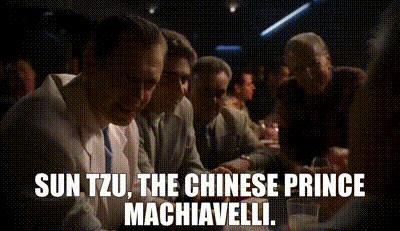
So to me the problem is not that Sun Tzu is ‘overrated’ per se, the problem is that every half baked author out there try to apply its principles to every problems that mankind have. The Art of War, as the title suggest, is not The Art of Managing your Business, the Art of Winning in Competition against your classmates, The Art of picking up Women, The Art of Living Life to the fullest. It is, and only is, The Art of War. It is ‘overrated’ only if you expect it to answer every problems in your life.
The Art of War is not the word of God. It is a war manual advocating common sense with pithy aphorisms - and a very good one.
It’s not that I think the Art of War is over-rated it’s that the more common problem is that many people vastly under-rate Sun Tzu. By misreading Sun Tzu thoughts and ideas, I believe many are in effect under-rating the problems which Sun Tzu is addressing, namely war, or the continuum of conflict resolution where divergence in interests of multiple parties extends to the possible use of lethal force on a massive scale. A lot of people trivialise this problem with idiocies like “what if someone threw a war and nobody came” (clue, they would win, then hunt down and enslave or kill everyone too foolish to contest the issue, as has happened countless times in human history) or “ban war” (said ban apparently enforced by throwing flowers at soldiers).
Understanding that war is a very real and intractable problem is necessary to fully appreciate the genius of Sun Tzu’s work, especially where it avoids fixed and easily definable tactics specific to the Warring States period and instead illustrates timeless concepts of out-thinking the enemy at every level of conflict. That the text is still mostly readily applicable or at least reasonably insightful after thousands of years is a testament to the inability of humans to push warfare beyond the fundamental aspects of conflicting interests and continuum of forcible resolution Sun Tzu addresses.

Still, the particular translation matters far less than having an appreciation that, in war, you have an active opponent who is trying to out-think and counter any moves you make, and having an appreciation of non-dualistic philosophical reasoning more characteristic of Chinese classics generally. The classic symbol of Yin-Yang (and a number of derivative versions) illustrates apparent dualism as being a part of a deeper structural unity which does not permit a fixed division into separate parts.
Hence the difficulty of applying the principles of the Art of War to artificial ideas of “winning/losing” (or war/peace, right/wrong, us/them) as categorical absolutes rather than negotiated possibilities in a continuum of desirability/costs. And it is very difficult, no one should sugar coat that. Humans sort and construct their perceptions of reality by appeal to such gross simplifications. Binary logic is an immensely powerful tool in many areas because it leverages the ability to simplify complexity and then build valid inferences based on fixed premises. But at some point you have to go beyond that to have a more fluid response to reality as it is. Which Sun Tzu does for the reality of war.
I would recommend anyone to read it. At the end of the day it’s a book of highly general aphorisms that effectively synopsise the essential insights that apply to all kinds of human conflicts. Turning an enemy's flank has the exact same effect in 2500 B.C. and in 2000 C.E. and it has the same effect in the boardroom, or public market as it does on the battlefield. Deception and intelligence are still used in exactly the same way, whether conquering foreign lands, or stealing market share from a competitor. It's a book about common sense; but common sense must seem profound to those who have none.
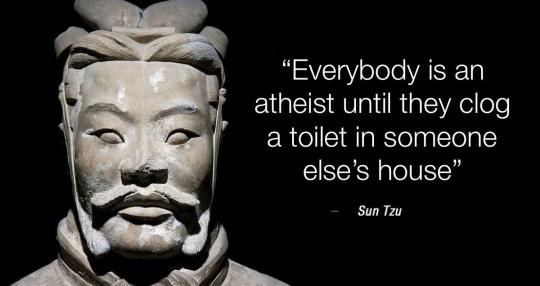
Overall, I think Sun Tzu’s Art of War is a worthy read and not overrated because in our society of over educated achievers, common sense is in as short of supply as it has ever been; if this book can provide the meaningful framework for educating very bright people in down to earth common sense, that can only be a good thing.
The value of the book then is to drive home the fact that, in human conflict, there really is Nothing New Under the Sun (Tzu).
Pardon the pun and thanks for your question.
#question#ask#sun tzu#military history#book#philosophy#china#culture#the art of war#war#military#warfare#strategy#society#literature#america#britain#japan
568 notes
·
View notes